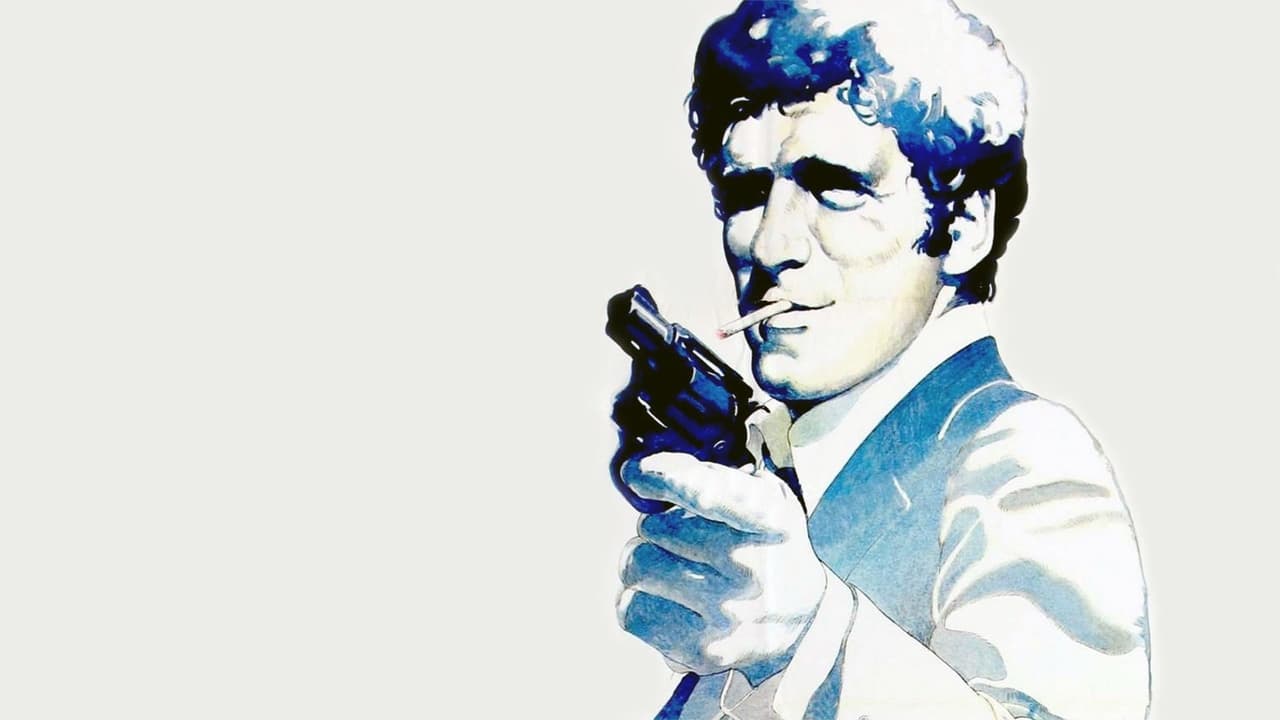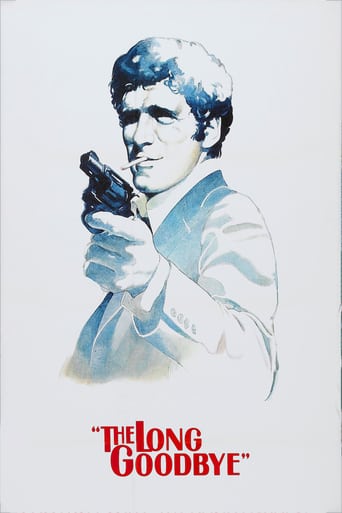

Kubrick famously asked Altman how he knew the shot of McCabe lighting his cigar in the snow was the right one; this 1973 film has many moments like those: not just the beautiful flash of the match being struck, but movements to which the camera has a perfect affinity: yoga contortions, squinting eyeballs, violent projections, cat walks. It'd be 5 stars silent, something more with those signature sound experiments.
... View More"The Long Goodbye" is vintage Altman. It ranks not only as one of his best works, but one of the best films of the 1970's. Ignore the negative comments, this is supposed to be an updating of Chandlers character Philip Marlowe to a more contemporary setting which was the whole point and Altman does it very cleverly in the most unexpected ways. Elliot Gould truly shines in his interesting interpretation of Marlowe. Seemingly lacking the confidence and self assurance of Humphrey Bogart. The problem, unfortunately, is that Altman doesn't understand what motivates Marlowe. He doesn't understand Marlowe's sense of friendship or honor. He does understand cruelty, which is why Marty is such a great invention. He also understands betrayal, which is why Eileen Wade is still a superb femme fatale. To some degree, he understands Roger Wade's whiny depression. But he doesn't get Marlowe at all, so he turns Chandler's meditation on lost friendship into a simplistic revenge story.You could say that Altman's treatment of Marlowe is "ironic," but that just confirms that he is out of his depth. There is nothing ironic about Chandler, and there shouldn't be. Marlowe's defining qualities are his ability to see through lies and his profound moral disgust for betrayal and dishonesty. He is not a vigilante in a bat suit. Marlowe illustrates the idea that, even if you are powerless to change the course of events, you can still maintain an unbreakable judgment of them. The whole point of Marlowe is that sometimes what you do has real consequences and determines who you are, and you have no way to ironically dance away from your actions. However clever, a parody isn't the equal of an original mystery novel. This movie is too serious to be a comedy, and too funny for a murder mystery. I suspect this confusion made it a commercial failure. The movie runs on too long. I did enjoy the cinematography (shots of Malibu and Mexico particularly) and being reminded of the goofiness of the early 70's, from the bad clothes to the bad haircuts,for both men and women. But all in all, not much to do with the original Marlowe. An Altman melange that does not quite amount to anything.Overall rating: 7 out of 10.
... View MoreRaymond Chandler's Detective Philip Marlowe fell Asleep and is Awakened 20 Years Later in the now Smogged Hazed Los Angeles and seems OK with it although He is undoubtedly Dazed and Confused.That's the Premise and You are Asked to Give In to that Premise in No Uncertain Terms and Go with the Flow. Marlowe Sure Does. He Stumbles and Mumbles barely trying to regain His sense of Place and Time. He still Smokes continuously and retains a Cynical Humor about the People that still Populate the "City of Angels".A Conglomerate of Artistic Displays are on hand in Altmanesque Fashion. The peppering Overlapping Dialog, a Fluid and Attentive Constantly Moving Camera, and a remarkable Ensemble Supporting Cast. Henry Gibson, Sterling Hayden, Director Mark Rydell, Nina Van Pallandt, and Baseball Pitcher Jim Bouton all Stamp the Film with Indelible Quirky Characters.The Film is an Homage to Hollywood and Chandler. Altman takes a Bite out of Tinseltown but is Kinder to Marlowe, Chandler, and Film-Noir. The Director is at His most Playful here and most of it Works although Loud and Angry Outbursts from Purists and Traditionalists say otherwise.It's Odd, Offbeat, and Obscure, Against the Grain of the Seventies Neo-Noir Realism and was Dismissed and Booed upon its Initial Release.Others saw a Singular Filmmaking Artist at Work and the Movie has Gained Elevated Status over the Years and has become sort of a Cult Movie or Novel Curiosity. Elliott Gould as Marlowe and Altman have Weathered the Controversy, and the Film Emerges as a Seventies Highlight.
... View MoreThis is hard to review. If you were born after 1980, this might not hold your attention. It doesn't have either the best production values or the best acting, but if you are a bit older, you might enjoy it for the nostalgia, as I did.I like movies from the '60s through the '80s, as they tended to be plot-driven, unlike more modern films, which are often built around their special effects. I liked how this film captured the times, l liked the cars, and I liked some of the other material objects in the film, even if they were in questionable taste, because it all brings back an innocence I can still vaguely remember. Some of the acting was a bit painful. In particular, Sterling Hayden was pretty awful. In his mind, I'm certain that he felt that he was actually playing himself--a misunderstood noble creature, a man's man fighting against the encroaching darkness, etc., so much more than the self- absorbed, crashing bore he appears to others, but which he no doubt actually really was. Every time he was gobbling up the screen, I couldn't wait for him to get off. Quite a few other performances were weak or hammy also. Still the plot was solid, and the attempt to drop the classic noir detective into that particular time period was interesting, if nothing else. In the end, the positives of a good plot and, for me, a hearty shot of nostalgia, significantly outweighed the drawbacks of mediocre acting and production values. So, I liked it a lot, but if you are a member of one of the ADHD generations, I'm not sure this film is for you, although it certainly wouldn't hurt to give it a try. It's not totally old-fashioned-- there's some modern swearing, a bit of disturbing violence, while no actual sex, a few scenes with some topless women, and even Arnold Schwarzenegger flexing his way through a brief, early, non-speaking role (at least, I didn't notice him saying anything, but the same thing happens when he actually talks, so I'm not totally sure). For what it's worth, that's my very personal take.
... View More